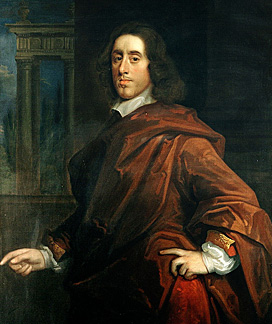Root and Branch petition facts for kids

|
|
| Introduced by | Henry Vane and Oliver Cromwell (Commons) |
|---|---|
| Territorial extent | England |
| Dates | |
| Made | February 1641 |
| Laid before Parliament | May 1641 |
| Other legislation | |
| Relates to | Clergy Act 1640 |
|
Status: Not passed
|
|
| Text of statute as originally enacted | |
The Root and Branch Petition was a special request given to the Long Parliament on December 11, 1640. A huge number of people, 15,000 Londoners, signed it. About 1,500 people then brought it to the English Parliament. The petition asked Parliament to get rid of the system of bishops, called episcopacy, completely – from its 'roots' and all its 'branches'.
Debating the Petition

When the petition was discussed in the House of Commons, some members wanted big changes for the Church of England. Henry Vane and Nathaniel Fiennes were among the main supporters. Vane said that having bishops was a bad idea that was "hastening us back again to Rome". Fiennes believed that bishops were a danger to both politics and religion in England.
The House of Commons was slow to act on the petition. But in February 1641, they sent it to a special committee. Vane and Fiennes were added to this group.
The Root and Branch Bill
This petition led to the creation of the Root and Branch Bill. Oliver St John wrote the bill. Henry Vane and Oliver Cromwell introduced it in Parliament in May 1641.
Edward Dering first read the bill, but he did not agree with it. He hoped that this extreme idea of getting rid of bishops would make Parliament pass a more moderate law, the Clergy Act. Dering later spoke against the bill. He wanted a "primitive episcopacy," which meant bishops would be more like regular clergy.
In one speech, Dering said:
"Having the same rank in Church Government is not found in the Bible. It is as wrong to logic as having the same rank in a country or family. It is just a fantasy, a dream, something that does not exist. If it is anything, it is complete Anarchism, and that is nothing; because having no government is not a government."
The debates in the Commons were very heated. But they showed that Parliament wanted to reform the church. Because of this, angry crowds started going into churches. They removed "scandalous images" and other "signs of popery" (things related to the Catholic Church). After many long discussions, the bill was finally defeated in August 1641. It died without a vote because Parliament had more urgent matters to deal with.
What Happened Next

In early 1641, the Commons tried to pass some new laws about how the country was run. But the bishops made sure these laws were rejected by the House of Lords. So, the Commons introduced the Bishops Exclusion Bill. This bill would remove bishops from the House of Lords, but it was also rejected.
In December 1641, riots broke out in Westminster. Several people died, and bishops could not attend the House of Lords. In January 1642, King Charles I left London. Many Royalist members of Parliament and Lords went with him. This gave the group against bishops a majority in both houses of Parliament. The bill to remove bishops became law in February 1642.
These growing tensions led to the start of the First English Civil War in August 1642. Many people who were against bishops joined the Parliamentarian side. Their opponents joined the Royalists. On June 12, 1643, the Parliamentarians gathered the Westminster Assembly. Their goal was to formally reorganize the Church of England.
After the First Civil War ended, the main goals of the Root and Branch Bill were finally achieved. This happened in October 1646. Parliament passed a law called the Ordinance for the abolishing of Archbishops and Bishops in England and Wales and for settling their lands and possessions upon Trustees for the use of the Commonwealth. This law officially got rid of archbishops and bishops.

